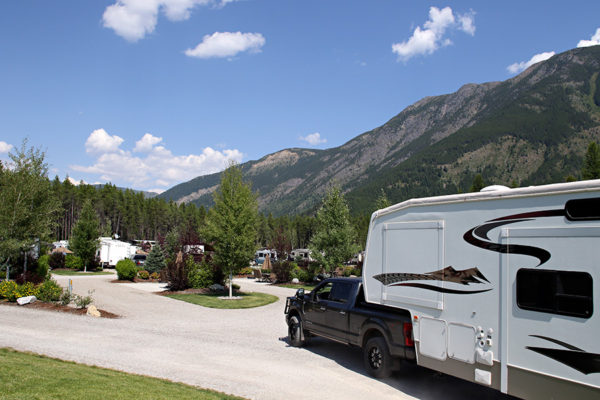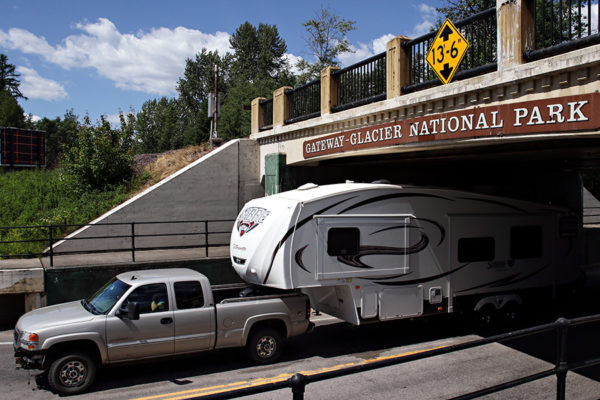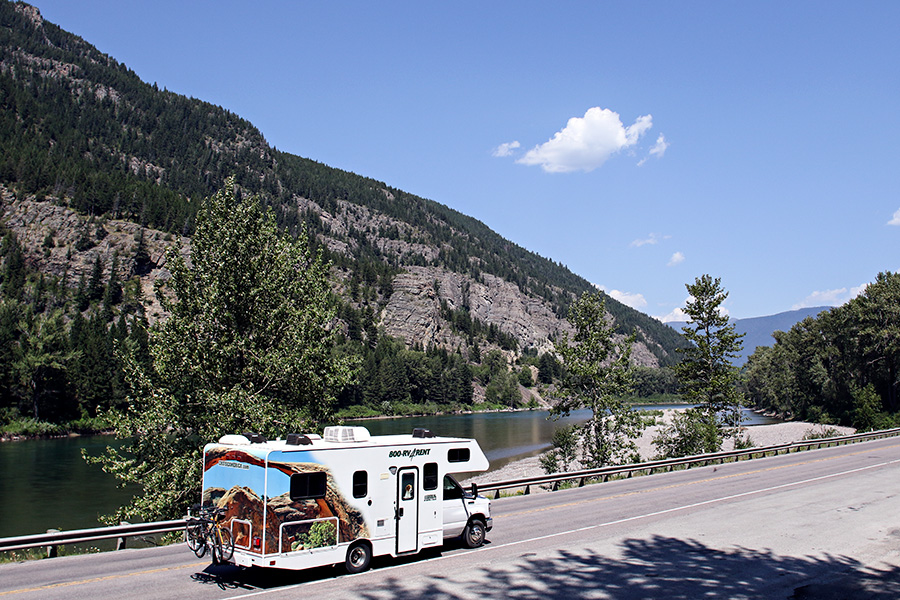Northwest Montana is many things to many people: home, a getaway, a wild place of adventure, the place you plant your heart and wait for the rhythms of nature to help it to grow.
But one thing Northwest Montana is not? A secret. At least not anymore.
Summer is the busiest time of year for the Flathead Valley and surrounding areas, due to the incredible magnetism of the landscape and the welcoming and laidback ethos of mountain culture.
Glacier Park International Airport is posting the highest passenger numbers in its history, hotel occupancy rates are bustling and new hotels come online each year. But many visitors get here via modes of transportation other than planes, and stay in campgrounds or RV parks, a trend showing high demand for these kinds of overnight stays.
“We are full. We’re even having a busier spring and fall season,” said Faith Bengtson, assistant manager at the West Glacier KOA campground. “We’re still turning people away, and it’s mostly RVs that we’re turning away.”

RV travel is back on the road in a strong way after buckling somewhat under the pressure of the recession. According to the Recreational Vehicle Industry Association, wholesale RV shipments reached their highest annual level with 504,000 units in 2017, with a total retail value exceeding $20 billion.
That’s a 13 percent increase over 2016, which saw $17.7 billion in retail value.
Bengtson said the West Glacier KOA saw this trend coming and in 2013 applied for an expansion to allow 56 more RV spaces. The expansion was approved in 2015, and it filled up almost immediately. In recent years, the campground has also added 22 deluxe cabins, three deluxe tent sites, and 30 patio sites to keep up with camper demand. They even expanded their restaurant to accommodate more people.
“It is crazy; it’s full every day, and we’re turning people away,” Bengtson said.
It’s not just the West Glacier KOA that saw this trend working its way to Montana. Since 2008, Flathead County has approved multiple RV park projects on its zoned land, adding at least 143 spaces.
On July 10, the Kalispell Planning Board approved a proposal for a new RV park south of town on U.S. Highway 93 that would add 330 RV spaces to valley on 50 acres. The project, called Montana Basecamp, would be the first RV park for Kalispell.
And earlier this year in May, the Montana Department of Environmental Quality approved the environmental assessment for water and wastewater facilities at a proposed RV park near Glacier Park’s west entrance. This project proposes building a campground with space for more than 100 RVs and 25 cabins on 178 acres just west of the West Glacier Village.
Residents raised concerns about the new campground, saying it could add even more traffic in an already bottlenecked area, increase pollution, and have negative impacts on safety and wildlife.
In Glacier National Park, more than 556,000 people visited in June, resulting in 76,411 overnight stays during the month. Of those stays, nearly 48,000 were in campgrounds maintained by the National Park Service. And of those campers, more than half were in RVs, with 25,605 preferring the vehicles and 22,326 staying in tents.
Last June, the park had 621,000 visitors, and 26,970 stayed overnight in RVs, while 24,835 stayed in tents. For comparison, 10 years ago, in June 2008, there were 287,059 visitors that month, and 11,325 stayed overnight in RVs and 11,005 in tents.

Increased visitation is a main focus of future planning at the park, as well as in the Flathead National Forest, which is also seeing increased use as more people vacation their way into the valley.
“The northwest corner of Montana has been found,” Janette Turk, public affairs officer for the national forest, said. “Our campgrounds are bursting at the seams. They’re full.”
The U.S. Forest Service operates 31 campgrounds in the FNF, and Turk said there’s definitely a need for more space. The Forest Service has plans for some expansions, such as at Ashley Lake, but all the plans are contingent on funding.
“It’s all funding driven and we’re not seeing that on the horizon unless this (federal) infrastructure bill comes through and we can meet the parameters,” Turk said.
The Forest Service doesn’t track the type of structure used to camp at the campgrounds, just the occupied spaces, Turk said, but there has been a noticeable increase in RV visitation because the rigs keep getting bigger while the campsites stay the same size. At the West Glacier KOA, Bengtson said their 75-foot spaces aren’t long enough for some RVs and whatever they’re now towing behind it.
Turk said the tourists show no signs of slowing, and stakeholders in the valley need to decide how they want the future to unfold.
“Tourists are here. People are getting out and about, so how do we get ahead of that, what does that look like?” Turk said.
